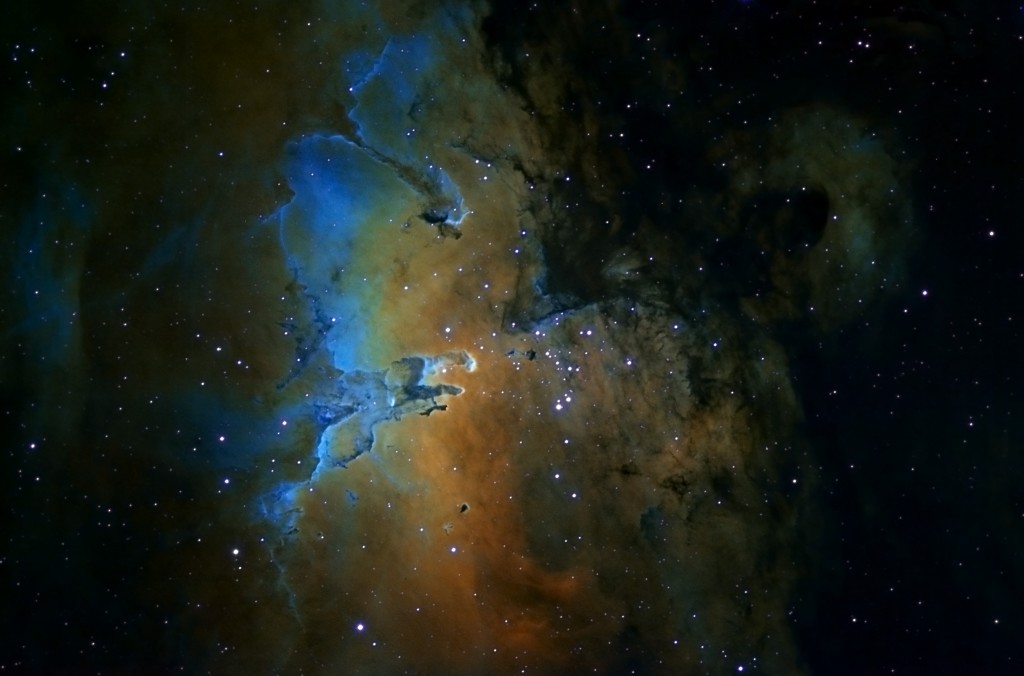 The gas columns of M16 are illuminated and eroded by the massive star cluster (NGC 6611) which is visible at the centre of the image. The cluster was born during a recent star burst period beginning some 2 million years ago and contains approximately 460 stars including about a dozen of spectral type O that emit huge amounts of UV radiation and which have created the surrounding field of ionised interstellar gas. The flood of ultraviolet radiation from the young star cluster is effectively boiling away the surface of the gas columns by a process of photoevaporation in which less dense gas is slowly evaporated from the surface of the pillars. This exposes denser material deep within the globule-like structures and produces the fascinating three dimensional shapes that are visible at the centre of M16.
The gas columns of M16 are illuminated and eroded by the massive star cluster (NGC 6611) which is visible at the centre of the image. The cluster was born during a recent star burst period beginning some 2 million years ago and contains approximately 460 stars including about a dozen of spectral type O that emit huge amounts of UV radiation and which have created the surrounding field of ionised interstellar gas. The flood of ultraviolet radiation from the young star cluster is effectively boiling away the surface of the gas columns by a process of photoevaporation in which less dense gas is slowly evaporated from the surface of the pillars. This exposes denser material deep within the globule-like structures and produces the fascinating three dimensional shapes that are visible at the centre of M16.
Right ascension: 18h 18m 48s | Declination: -13° 47′ 04″ | Distance: 7,000 Light Years
Field of view: 57 x 38 arcmin
Camera: SBIG STL-6303E
Telescope: PlaneWave Instruments CDK 12.5 F/7.9
Guiding: External 80mm F/4 guidescope with an Atik 314L+ for guiding
Mount: Paramount PME
Filters: Astrodon Ha (5nm), OIII (5nm), SII (5nm)
Exposures: Ha 6 x 10 min; OIII 15 x 10 min; SII 15 x 10 min
Total exposure: 6 hours
Image composition: Colour Mapped Narrowband SII:Ha:OIII (Hubble Palette)
Scale: 0.73 arcsec/pixel
Image acquired: 1-8 July 2013 from AstroCamp, Nerpio, S.E. Spain
Image capture with MaxIm DL, FocusMax, ACP; Image processed with MaxIm DL, PixInsight (DBE), Photoshop CS4, FocusMagic (Hubble Palette Colour Mapping following method by Bob Franke)